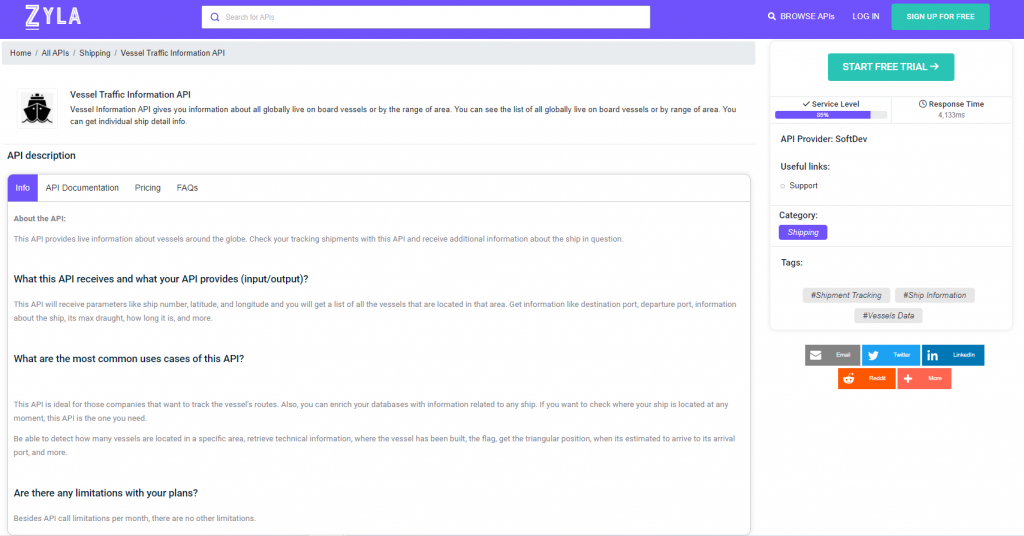In today’s maritime industry, vessel data is becoming increasingly important for optimizing operations and improving safety. A Vessel Data API offers a convenient and efficient way to access this information and integrate it with other systems and applications.

Three Common Use Cases For Vessel Data APIs
Vessel Tracking and Monitoring
With vessel data APIs, it is possible to track and monitor vessels in real time. This can be useful for a variety of applications, such as fleet management, logistics, and security. By accessing vessel data, companies can gain insights into vessel locations, routes, and performance metrics. This can help optimize vessel routing and improve safety and efficiency.
Environmental
Compliance Monitoring Vessel data APIs can also be used for environmental compliance monitoring. By accessing vessel data, it is possible to track vessel emissions and ensure compliance with environmental regulations. This can help companies avoid fines and penalties and demonstrate their commitment to sustainability.
Predictive Maintenance
Vessel data APIs can also be used for predictive maintenance. By accessing data on vessel performance and maintenance history, companies can identify potential issues before they become serious problems. This can help reduce downtime and maintenance costs and improve overall vessel reliability.
In Conclusion…
Vessel data APIs offer a wide range of benefits for the maritime industry. By leveraging vessel data, companies can improve operations, reduce costs, and enhance safety and sustainability. If you are interested in using vessel data APIs, be sure to choose a reliable and reputable provider that can offer the data and support you need.
Check Vessel Traffic Information API
If you are looking for a reliable and useful API for vessel tracking and monitoring, we highly recommend the Vessel Traffic Information API. This API provides accurate and real-time information about vessel locations, routes, and speed. It also offers advanced features such as historical data and predictive analytics.

With the Vessel Traffic Information API, companies can optimize their fleet management, logistics, and security operations. Additionally, this API can help companies ensure compliance with environmental regulations and reduce maintenance costs. Choose the Vessel Traffic Information API for your vessel data needs, and enjoy the benefits of improved efficiency, safety, and sustainability.
Vessel Traffic Information API Endpoints
The API has a variety of endpoints, such as “GET VESSEL DATA BY SHIP ID” or “GET VESSELS BY GEO LOCATION.” Provide the required data and make the API call, and you will receive the information in seconds.
For example, if you choose the “GET VESSEL DATA BY SHIP NAME” endpoint, the Vessel Traffic Information API may respond such as:
{
"status": 200,
"success": true,
"message": "IMO Code 9270622 is valid",
"data": {
"imo_number": "9270622",
"vessel_name": "AQUAMAN",
"ship_type": "Offshore Tug/Supply Ship",
"flag": "Vanuatu",
"gross_tonnage": "2332",
"summer_deadweight_t": "2162",
"length_overall_m": "69",
"beam_m": "16",
"year_of_built": "2003"
}
}To make use of it, you must first:
1- Go to Vessel Traffic Information API and simply click on the button “START FREE TRIAL” to start using the API.
2- After signing up in Zyla API Hub, you’ll be given your personal API key.
3- Employ the different API endpoints depending on what you are looking for.
4- Once you meet your needed endpoint, make the API call by pressing the button “run”. Then, you will see the results on your screen.
Want to learn more? Check Comprehensive Guide To Ship Tracker API In 2023

